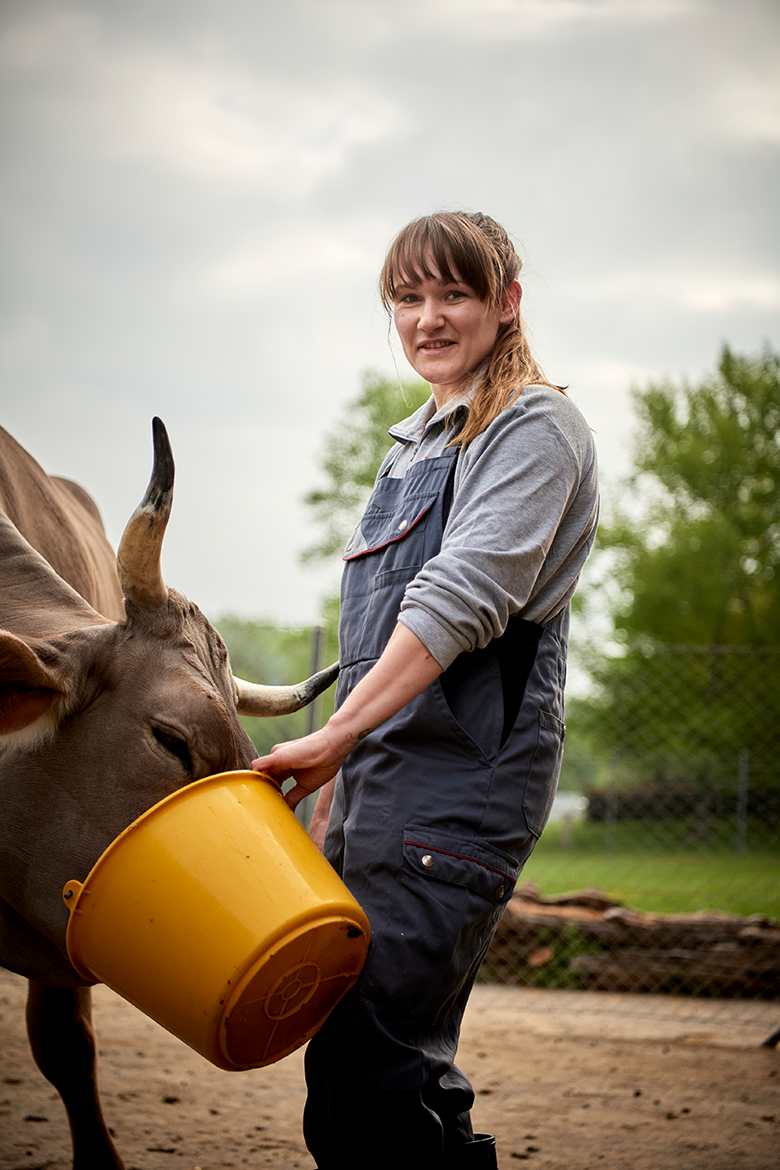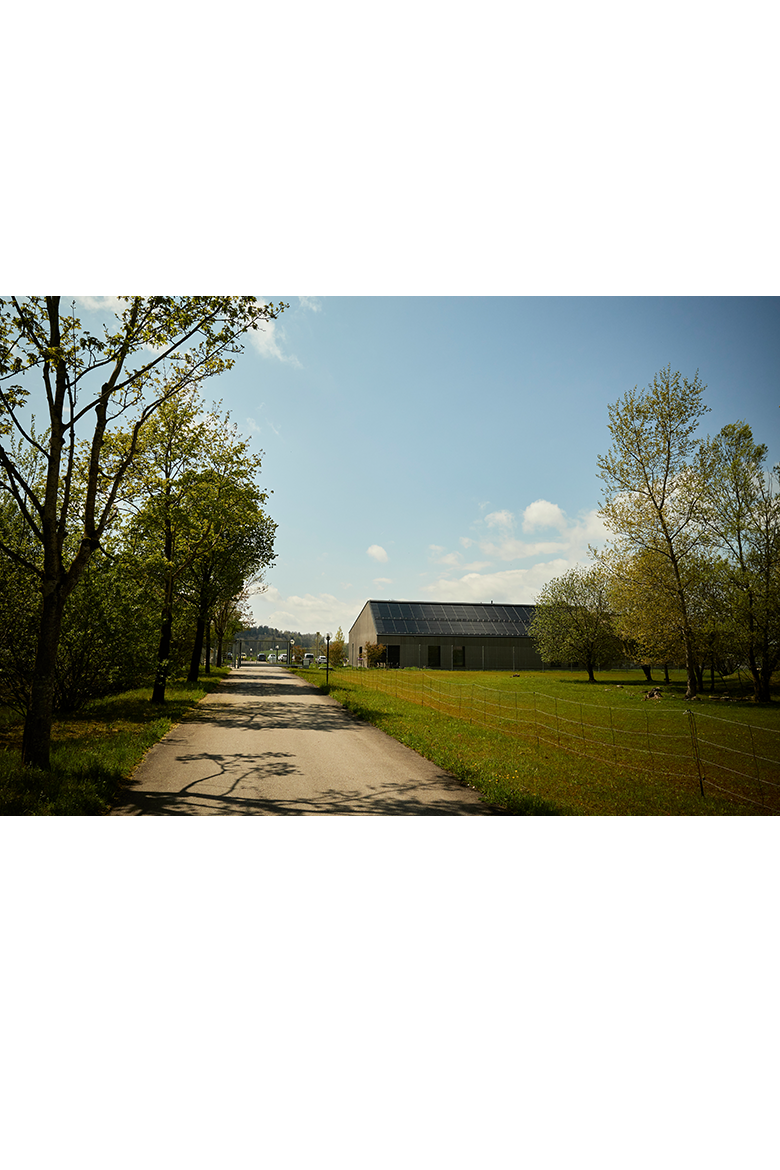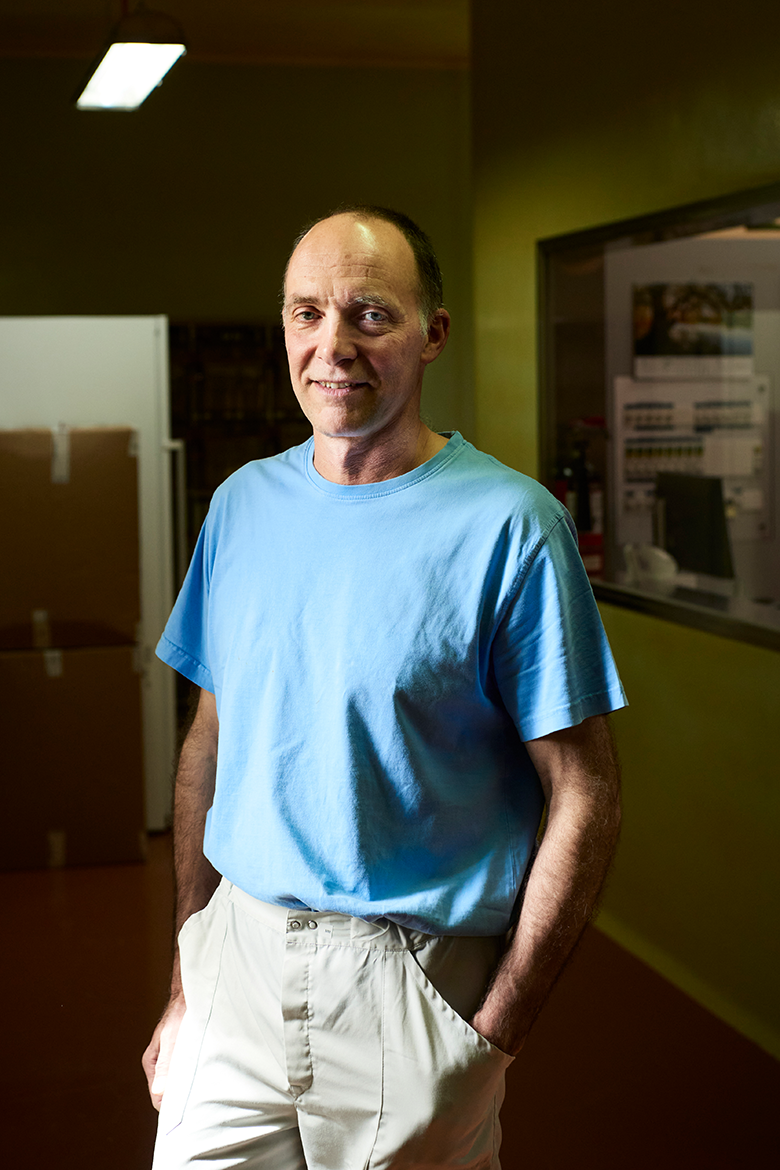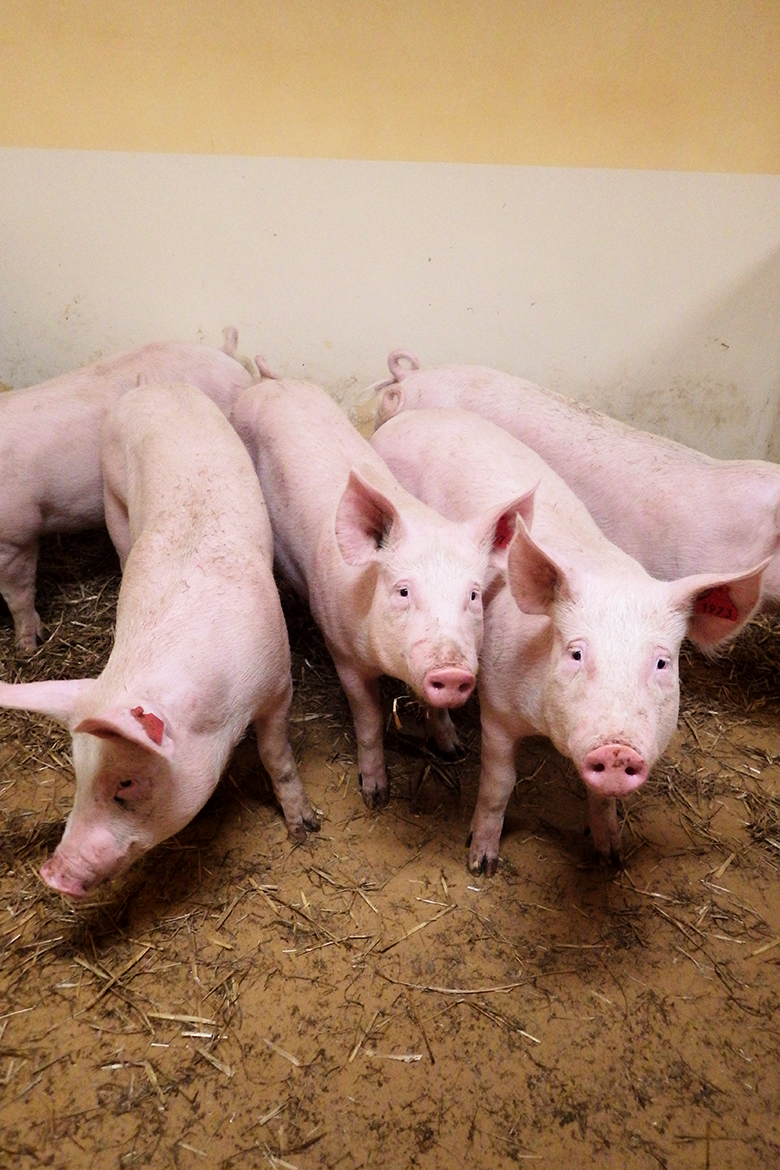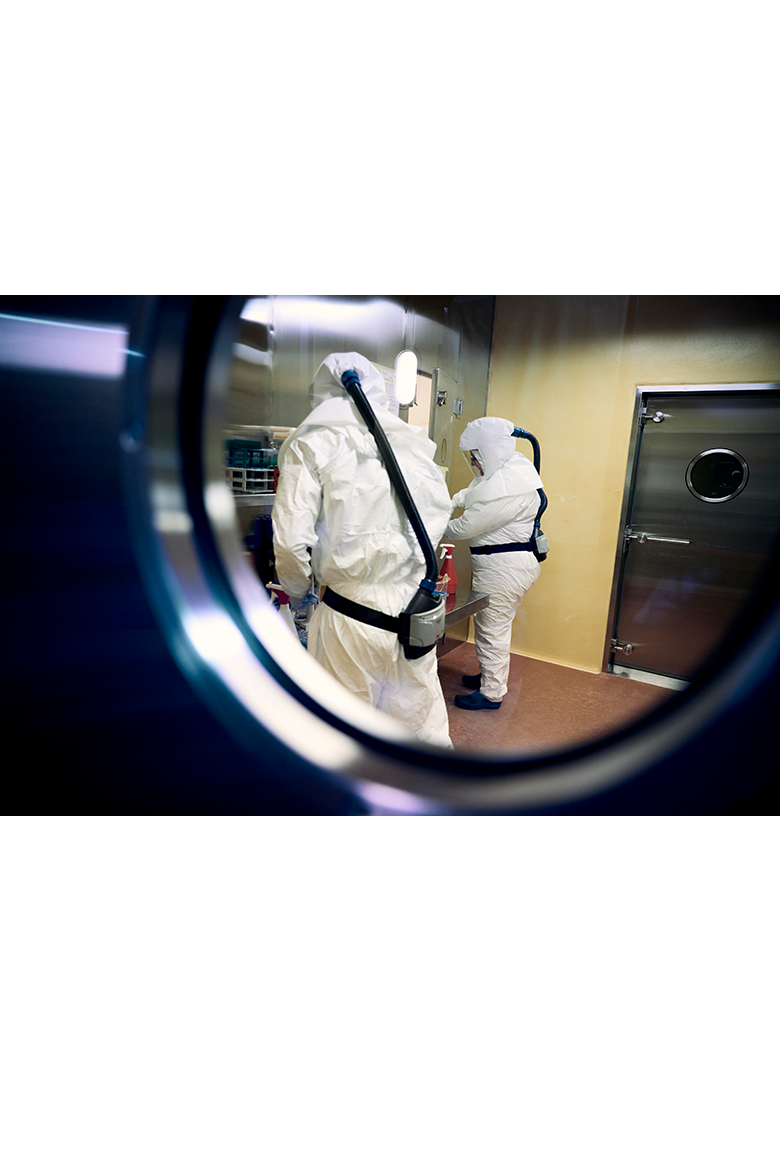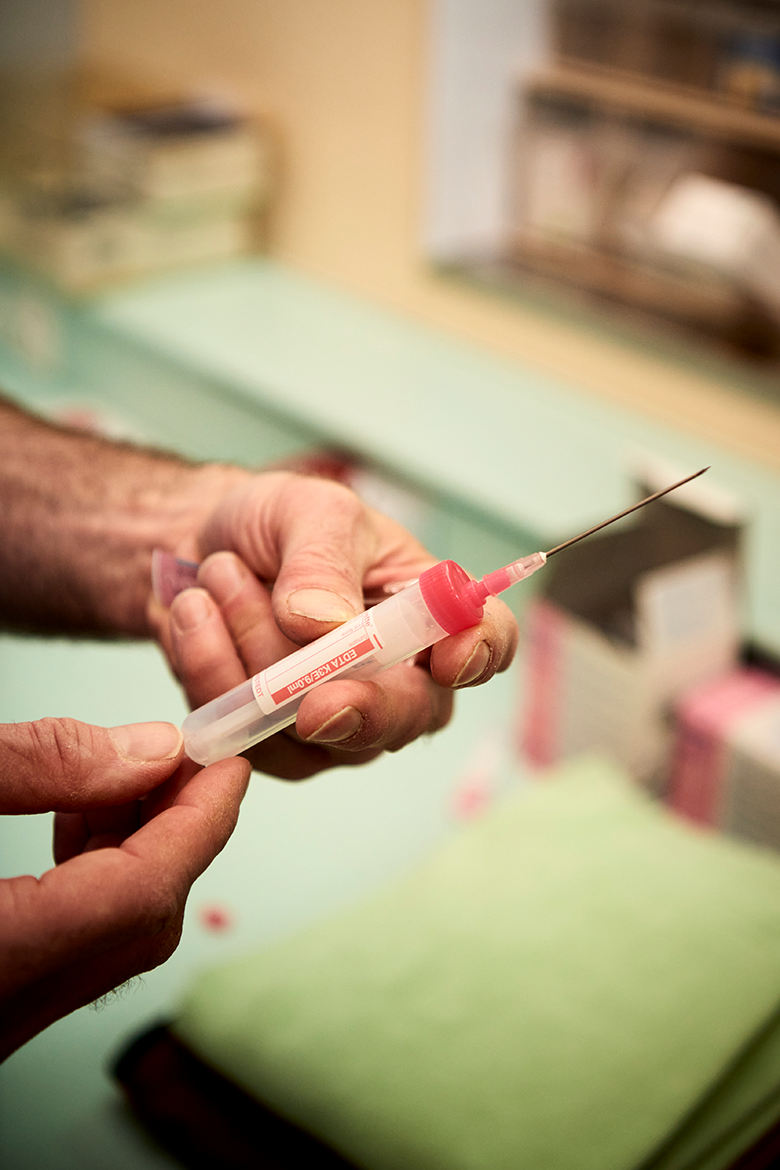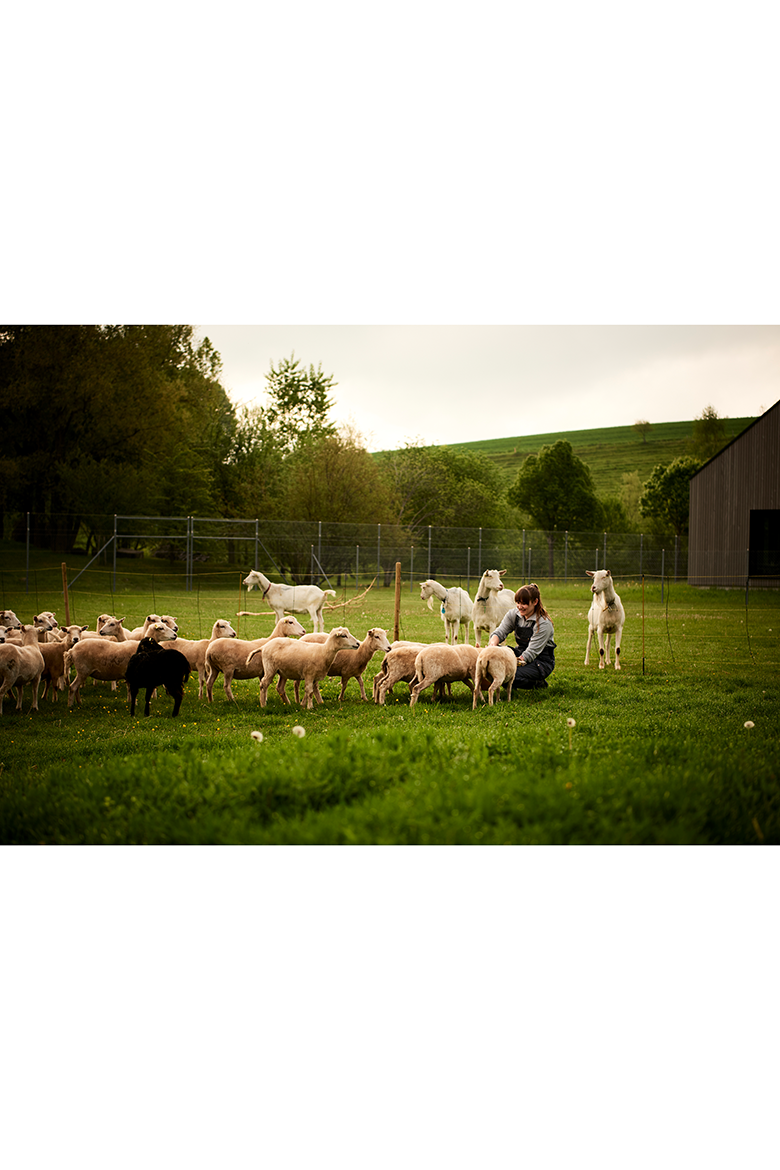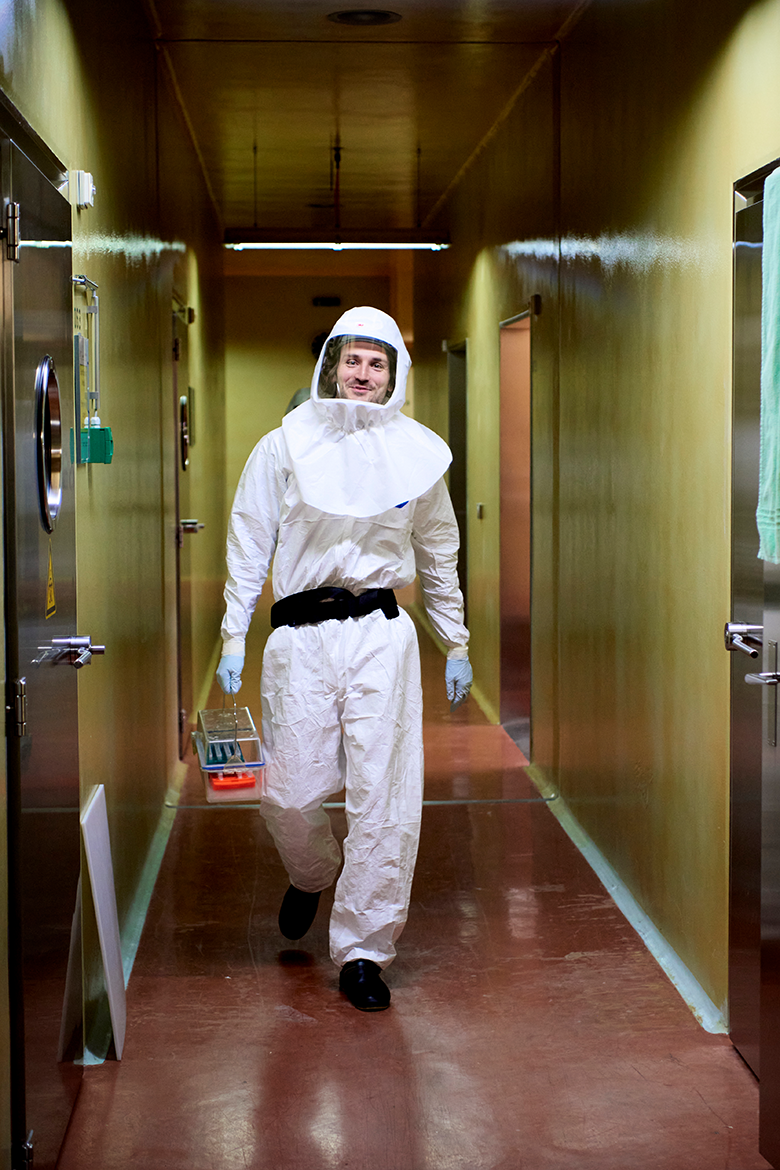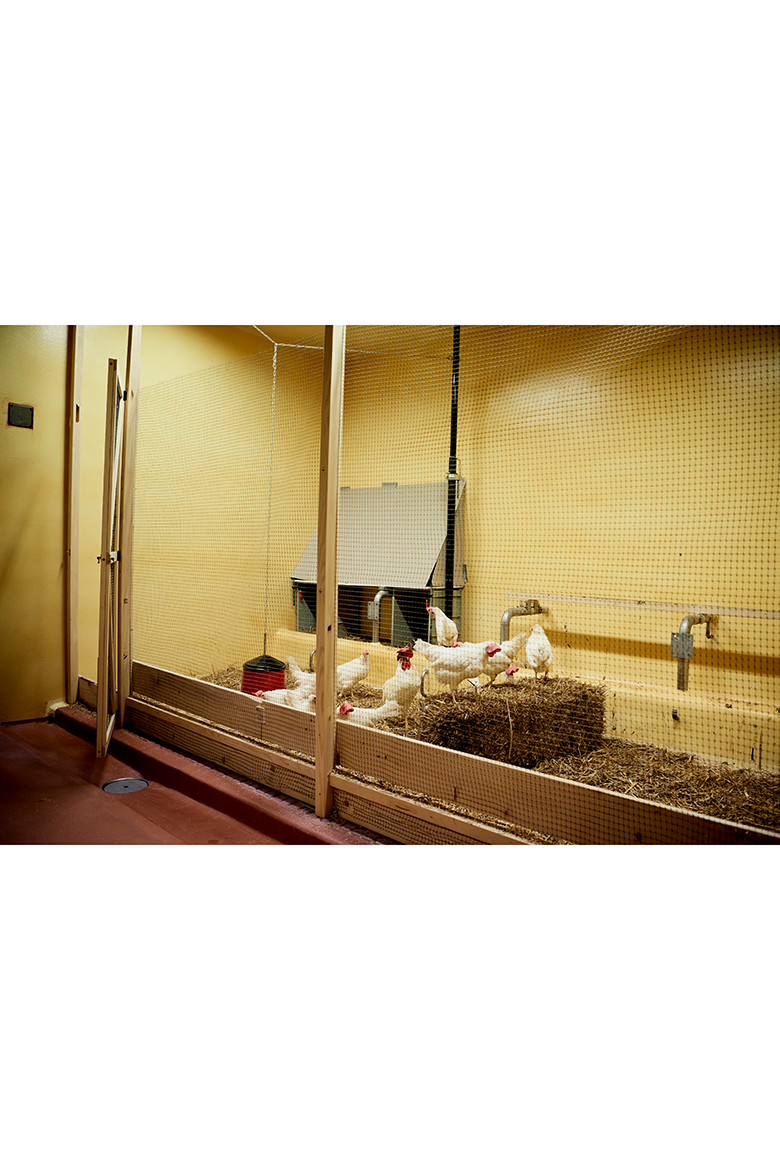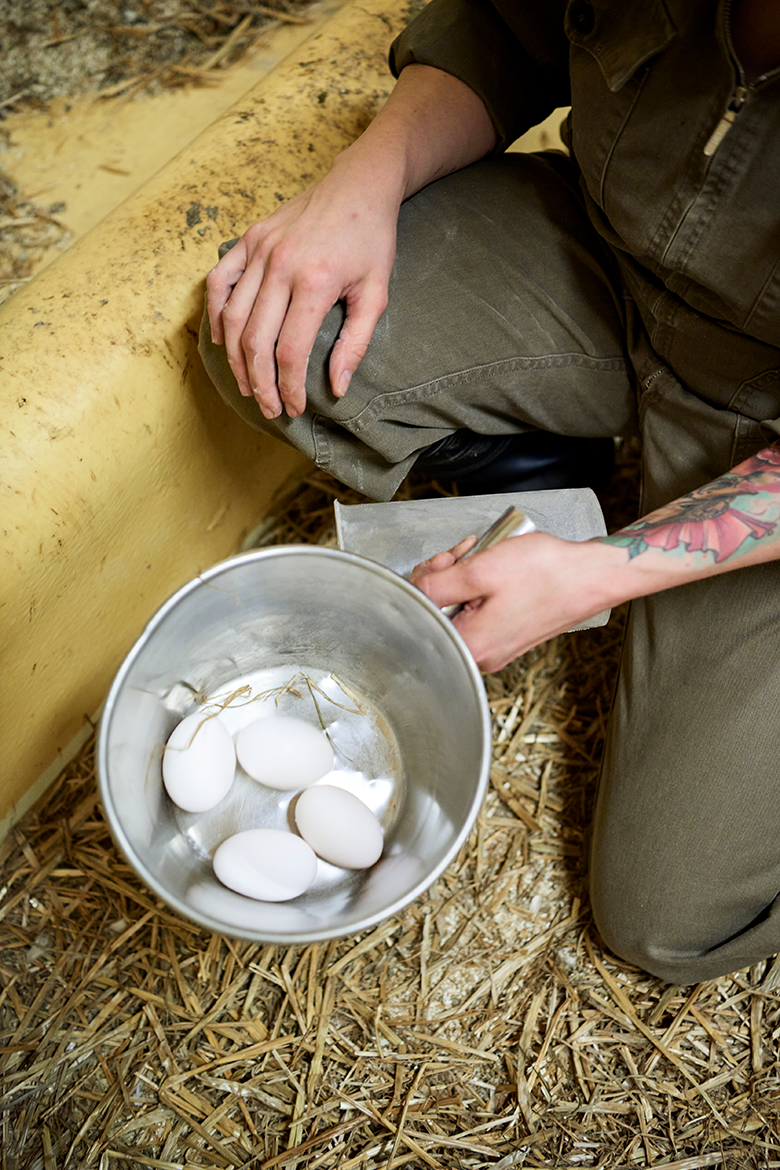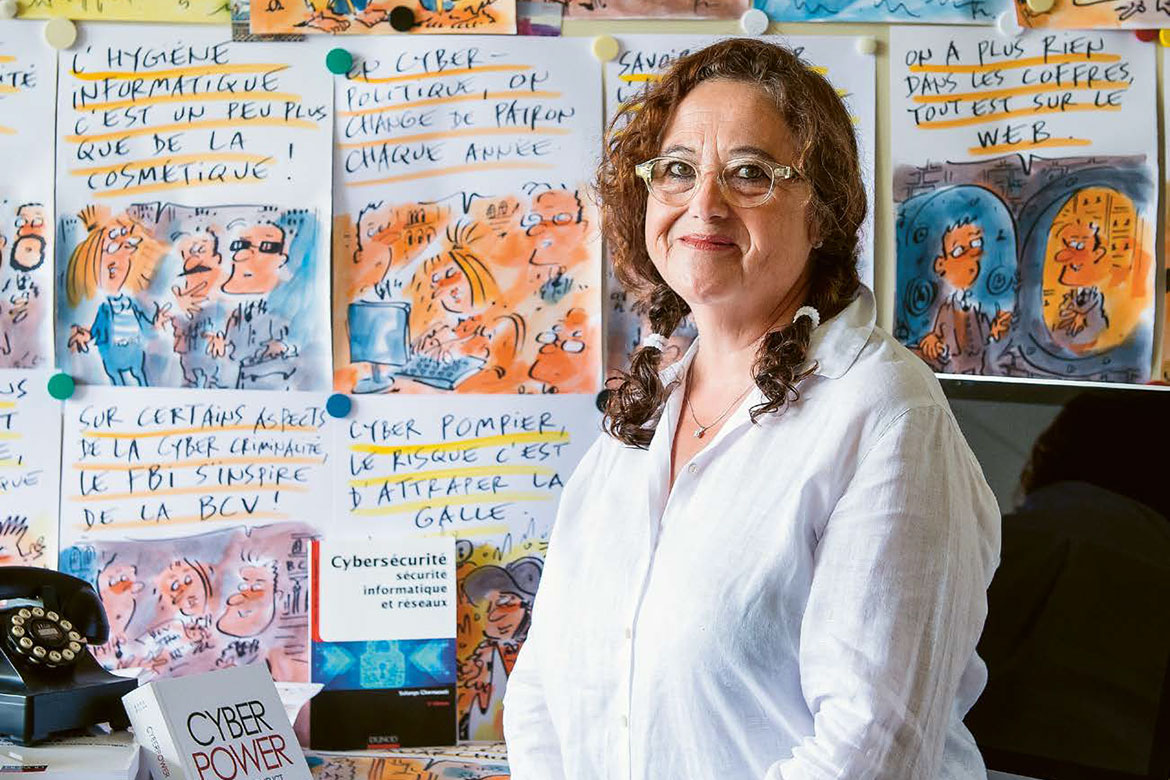Report
High security in the pigsty
The bird flu virus keeps returning to Switzerland, and African swine fever has already reached our neighbours to the north and south. Researchers at the Institute of Virology and Immunology (IVI), Switzerland’s reference laboratory for highly infectious epizootic diseases, are investigating how we might fight such diseases.

These pigs have it good at the Swiss laboratory for contagious epizootic diseases. They’ve just recovered from a very dangerous illness, they’re kept clean, and have plenty of toys. | Image: Raffael Waldner
You couldn’t tell that there’s anything untoward about the six pigs in front of us. They are a mixture of females and castrated males, all six months old. They surround Katarzyna Sliz, the laboratory animal keeper, nuzzling her hands with their snouts. “They know exactly who gives them their food”, she says with a smile. When she pours some feed into their pen, they scramble to find it in the straw. That’s a good sign: “Healthy pigs always have an appetite”, says Sliz. They are hungry and alert this Tuesday morning in late April, but just eight weeks ago they were seriously ill after having been infected with African swine fever.
Happy, healthy pigs
This highly contagious disease affects both wild and domestic pigs and is almost always fatal, with infected animals dying within seven to ten days. The pigs before us are kept in the high-security pen at the Institute of Virology and Immunology (IVI) in Mittelhäusern in the canton of Bern, Switzerland’s reference laboratory for contagious epizootic diseases. They are still alive because they were given a weakened form of the virus. “This rare, natural variant lacks large gene segments that are important for virulence”, says Nicolas Ruggli, a virologist and veterinarian who heads animal husbandry and animal experiments at IVI. Ruggli and his team use this weakened virus to investigate how an animal’s immune system can defend itself. This would not be possible if the pigs had been infected with the deadly form of the virus – which is in fact far more common. They would have died before their immune defences had been able to adapt in any way to fight the pathogen.
African swine fever has already spread across much of Europe, including Switzerland’s neighbours Germany and Italy. The virus is also extremely resistant. It can survive in meat products like salami for months, and remains contagious too. The pathogen is harmless to humans, but it would be devastating to native wild and domestic pigs. “This is why we have to be prepared”, says Ruggli. “We have to learn as much as possible about how this virus works, and how we can stop it”.
Very clean pigs
The six test pigs at IVI were sick for some 20 days. They had a high fever at times, and were very weak. Even now, after having recovered, they still carry the pathogen in their blood along with specialised antibodies and T-cells that their immune systems have produced. Once a month, Sliz draws blood from the animals. Ruggli and his team then conduct several analyses, including one of the mRNA in the T-cells in their blood. Their composition reveals what proteins are formed by the immune response, and what signal transmission pathways have been activated. “From this, we can determine what components ought to be stimulated by a vaccine”, says Ruggli.
Apart from having regular blood samples taken, the life of the high-security pigs at IVI is hardly different from that of their peers in pens outside their wing. Perhaps their lives are actually a little more exciting, because these animals have toys – e.g., plastic tubing to chew on and a basket of hay hanging from the ceiling. In one respect, however, their pigpen is very different from a normal sty: it is super clean. The pigs are mucked out every day and given new hay bedding, and they also get a shower every morning. Today, as usual, Sliz sprays them down using a water hose. Absolute cleanliness is a must for research purposes. “During an experiment, we have to do our utmost to preserve the same conditions in the pen”, says Sliz. “The easiest way to do that is to keep it meticulously clean”.
Soaping up
The high-security aspect of this pigpen also makes life very different for the human beings working here. Before Sliz and Ruggli can visit the pigs in the high-security wing, they have to go through three sets of security doors and change their clothes three times too – including changing their underwear twice. The procedures in place when they exit the pen are even more complicated. As they move through the double-door safety areas, anyone who has been with the infected animals has to take off their clothes, shower for three minutes, and soap themselves up twice – including their hair. All this is controlled automatically. Anyone who hasn’t remained for three minutes under the shower and who hasn’t used the shower tap at least three times is simply not let out. They can’t allow any chance that someone might carry a pathogen out with them.
Afterwards, they get new clothes for the area where the security is one level lower. There are no more infected animals there; this is where the laboratories are situated where the researchers work with the pathogens. When Sliz and Ruggli exit this wing through another double door, they have to go through the whole showering procedure again. Only then are they allowed to exit into the neighbouring building where the ‘normal’ laboratories and offices are located. What’s more, everyone who has visited the high-security wing has to remain in a kind of quarantine: for the next 72 hours they are forbidden from going anywhere near livestock.
The researchers at IVI are investigating other highly contagious animal diseases besides African swine fever. These include foot-and-mouth disease, which affects cattle, pigs, sheep and goats. Time and again, entire herds have had to be culled to prevent its spread. Diseases affecting poultry and other birds are also studied at IVI – e.g., Newcastle disease, which is found across the world, and the H5N1 avian flu, which can also infect humans. The most recent case in Switzerland was at Bern Zoo in February 2022, when two grey herons and a pelican died and were found to be carrying the H5N1 virus. Samples of any suspected avian flu pathogen first have to be sent to the National Reference Centre for Poultry and Rabbit Diseases (NRGK) in Zurich for identification. The experts at IVI then analyse the samples in greater detail.
One security level lower, and one security door further on, Sliz checks on a flock of chickens. These animals are not infected, but she still keeps a close eye on them. If one of the chickens had unkempt feathers or was hanging its head, that would be a sign of illness. But everything’s fine here. Some of them are dozing peacefully, while others are scratching in the straw. When Sliz scatters fresh grain for them, the whole flock comes to feed. Meanwhile, Sliz collects their eggs. The fertilised embryos inside them are only a few days old, and the IVI team needs them so that they can reproduce the avian flu virus in their lab for diagnostics and research purposes.
Always a step ahead of the pathogens
In addition to the pigs and chickens, IVI also keeps cows, sheep, goats, rabbits, guinea pigs and mice for its experiments. The pens and stables in the different security areas can be adapted quickly to meet the needs of the different species. There is also an outdoor area where several cattle, sheep and goats are currently living. They are not part of any experiment, though the IVI staff take blood from them now and again for various diagnostic tests.
Ruggli says that IVI enjoys a major research advantage because he and his colleagues are not confined to studying diseases in an animal model, but can do so with the living hosts. “When studying a disease that affects an entire organism, you reach a point where you can no longer break it down into individual cells or use a mouse model”. Their experiments enable them to achieve results directly applicable to animal patients.
Next year, the IVI team plans to begin investigating the Wesselsbron virus that is currently widespread in Africa and can infect sheep, goats, rodents and humans. “The pathogen is mainly transmitted by mosquitoes, so global warming is increasing the likelihood that it might also spread here in the future”, says Ruggli. “In virology, we have to remain one step ahead of all eventualities if we want to have any hope of identifying future threats and responding to them”.
This approach paid off during the Covid-19 pandemic. Ruggli describes one of his colleagues at IVI, the virologist Volker Thiel, having already been researching into coronaviruses in cats and pigs for a long time before the pandemic. “That meant we had the expertise to begin research into SARS-CoV-2 straightaway”, says Ruggli. Thiel was subsequently appointed to the Covid-19 Task Force.
As for the pigs in the experiment with African swine fever: they will now be observed at IVI for a few more months before being euthanised, as is required by the ethical guidelines for animal experiments. But they might well have helped to save the lives of tens of thousands of other pigs in the future.

